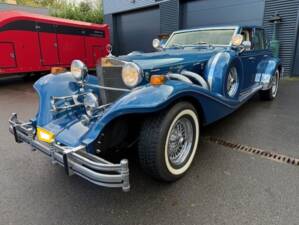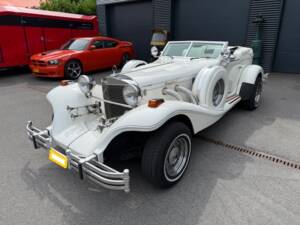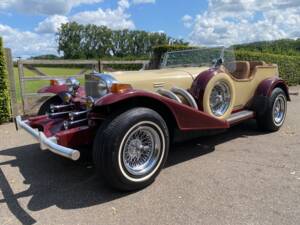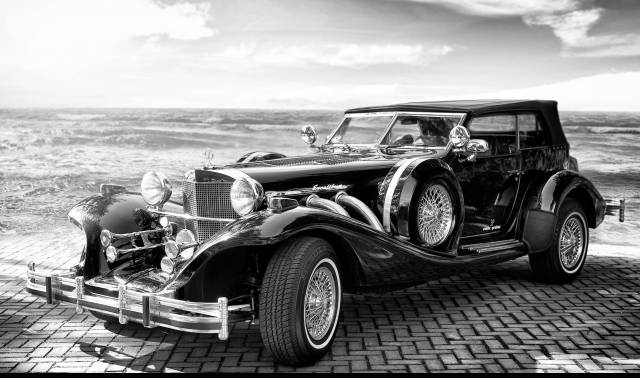- Car
- Excalibur (5 offers)
Excalibur classic cars for sale
Excalibur vehicles combine classic pre-war luxury aesthetics with robust American engineering. Built in limited numbers in Milwaukee from the 1960s to the 1990s, these hand-crafted models evoke 1930s supercars in both visuals and technical refinement. Their rarity and equipment set them apart in the world of classic automobiles.
Search results

1989 | Excalibur Phaeton V
EXCALIBUR PHAETON V
VAT is reclaimable

1989 | Excalibur Phaeton V
EXCALIBUR PHAETON V
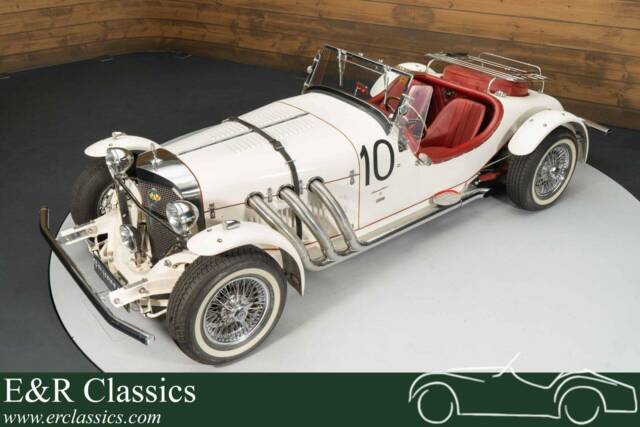
1966 | Excalibur SS Series I
Oldtimer Excalibur

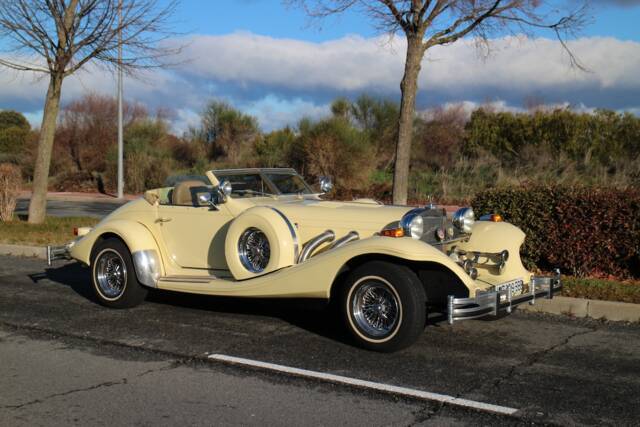
1984 | Excalibur Roadster IV
Rare 1984 Excalibur Roadster for sale
Excalibur listing references from Classic Trader
Below you will find listings related to your search that are no longer available on Classic Trader. Use this information to gain insight into availability, value trends, and current pricing for a "Excalibur" to make a more informed purchasing decision.
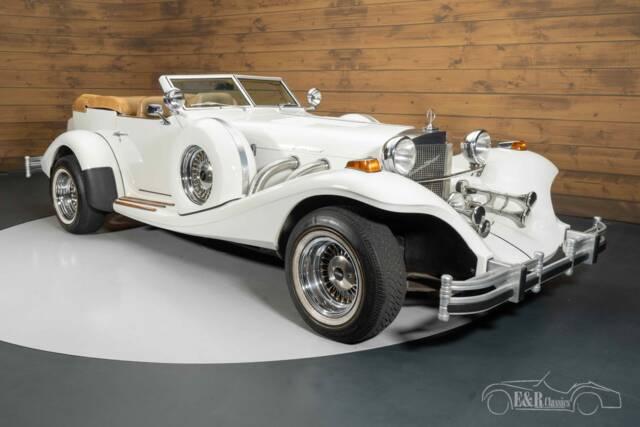
1982 | Excalibur Phaeton
Excalibur Phaeton Series 4 | 1982 - For sale by auction. Estimate 64950 EUR
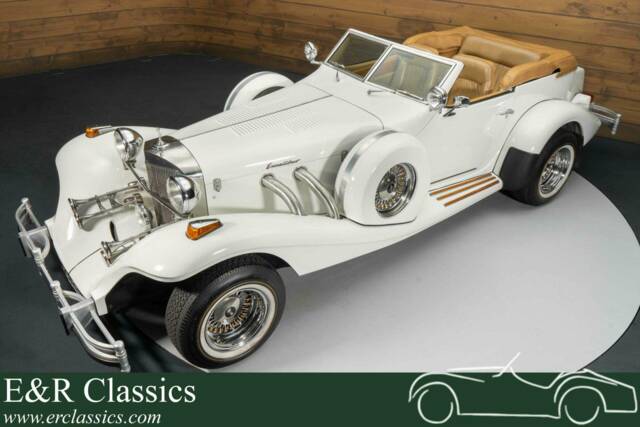
1982 | Excalibur Phaeton
Oldtimer Excalibur Phaeton Series 4 | Very Good Condition | 1982
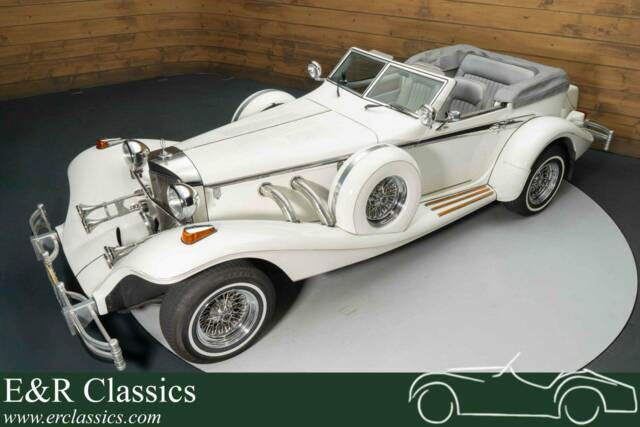
1984 | Excalibur Phaeton
Oldtimer Excalibur Phaeton Series 4 Anniversary Edition | 1984
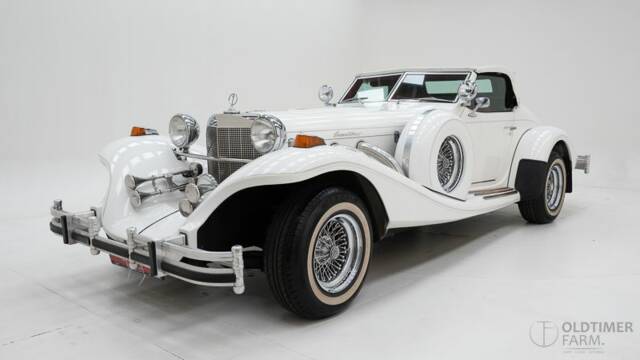
1983 | Excalibur Roadster IV
1983 Excalibur Series IV Roadster '83
1985 | Excalibur Phaeton V
Luxus-Cabrio-Roadster
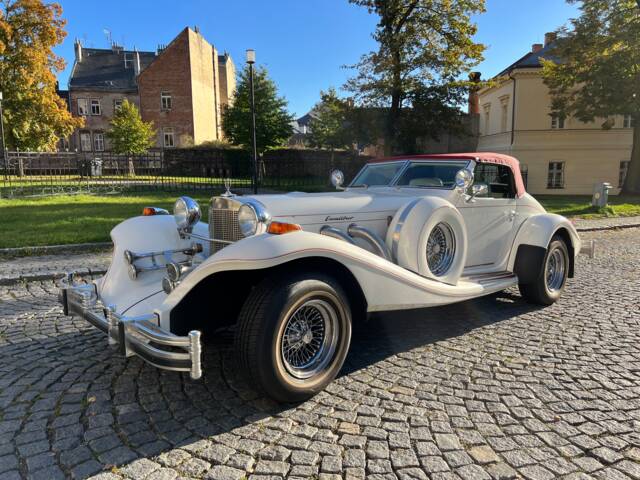
1984 | Excalibur Roadster IV
Timeless Elegance: 1984 Excalibur Series IV Roadster
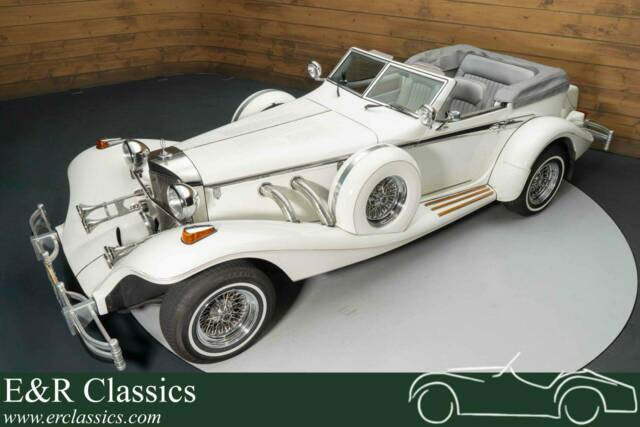
1984 | Excalibur Roadster IV
Oldtimer Excalibur Phaeton Series 4 Anniversary Edition | 1984
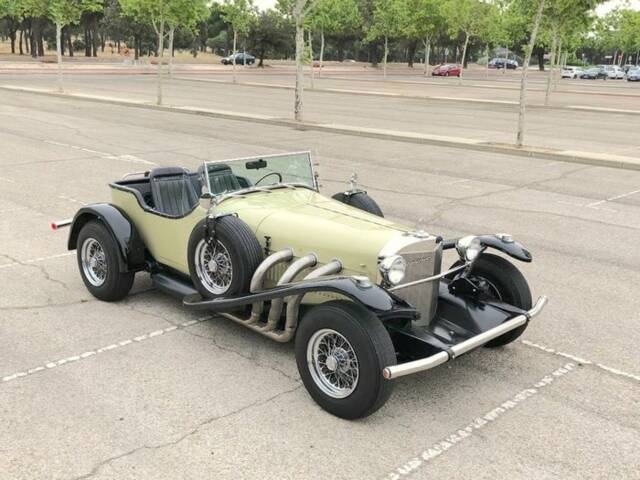
1974 | Excalibur SS Phaeton 2
Excalibur - Series II "Short Phaeton" One-off - 1974
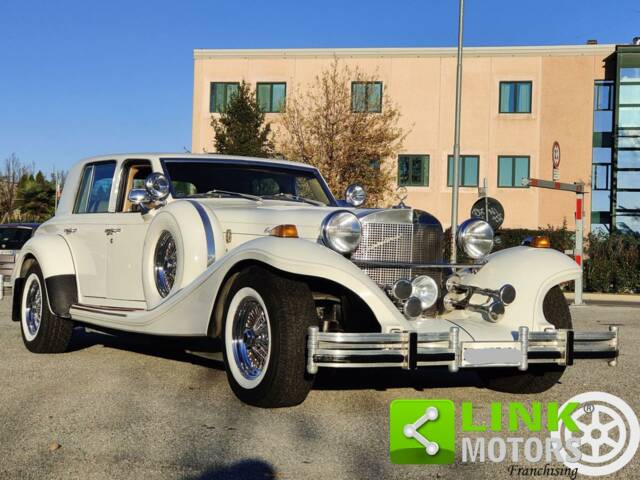
1965 | Excalibur Sedan
EXCALIBUR Sedan Tipo SF4317 Targa Oro ASI
History of Excalibur Automobiles
Excalibur Automobile Corporation was established in Milwaukee in 1964 by industrial designer Brooks Stevens. The company’s mission was to fuse modern American reliability with the charisma of 1930s luxury sports cars. Stevens, previously a Studebaker consultant, created the original Excalibur as a show car in 1951, inspired by the 1928 Mercedes-Benz SSK. After Studebaker withdrew due to financial struggles, Stevens and his sons, with Studebaker’s approval, launched Excalibur Automobiles and started producing series cars with distinct classic design.
Excalibur was pioneering in the US, being the first company to specialize in new vehicles with a retro look. This innovation led to a burst of copycat brands in the 1970s. Despite the fleeting popularity of some competitors, Excalibur secured its place as an independent manufacturer of neoclassic luxury vehicles. Over the decades, it built a dedicated following thanks to its blend of dramatic styling, hand-built bodies, and reliable mechanicals sourced from major American brands.
Excalibur Model History
The first production Excalibur, the SS Roadster, appeared in 1965, using Studebaker underpinnings and a striking pre-war roadster body. The Series I was short-lived and saw only small volumes. Series II arrived in 1970, now with Chevy power, and was followed by more refined, better-equipped Series III and IV iterations throughout the 1970s and 1980s. Each new series retained hallmark features: elongated bonnet, separate fenders, and chrome-adorned grilles, but interiors became increasingly luxurious. Production remained low, with some series numbering just a few hundred cars each. Excalibur expanded to include Phaeton (four-seater), Roadster, Coupé and (rare) Sedan body styles. The last major series, Series V, was produced until the company’s decline in the late 1980s and early 1990s.
Highlights and market position of Excalibur
Excalibur cars stand out for their hand-built fibreglass bodies, stainless steel trim, and unique blend of pre-war design cues with modern amenities. Every Excalibur features a custom steel chassis, and most styling elements reinterpret 1930s Mercedes-Benz models. Interiors often include full leather upholstery, wood trim, and luxury equipment such as power windows, seats, and air conditioning. Notably, the company was able to supply original spare parts long after production ceased, supporting ongoing collectability and usability.
Technical Data
Special Editions and Collectible Models
Among the rarest are the Series I SS Roadster (just 37 made), early SS1 versions, and limited editions from the Series II (around 400 built). Later attempts included the Limited 100 model, powered by a 350 hp Corvette LT1 V8, and the super-rare Cobra. Excalibur’s customisation options offered a broad palette of colour and accessory choices, making many cars one-of-a-kind. Pullman limousines and sedans appear rarely on the market and represent the pinnacle of the brand’s exclusivity.
Weak Spots and Common Issues
Thanks to their use of standard GM/Ford mechanicals, Excalibur models are generally reliable and benefit from good parts availability, even decades after production ceased. The fibreglass bodies are robust, though buyers should check for issues such as crazing or delamination. Some early models may show wear in electrical systems or interior fittings. Expert knowledge is required for the stainless trim and unique assemblies, but these are offset by ease of access to drivetrain, suspension, and running gear elements.
Engine and Performance, Transmission and Handling
With V8 engines ranging from 250 to over 300 hp and generous torque, Excaliburs deliver brisk acceleration and effortless cruising, despite their imposing dimensions. Chassis settings err on the comfortable side, but the combination of disc brakes, power steering, and long wheelbase makes Excaliburs undemanding to drive. Later models benefit from further refinement, with improved comfort and more elaborate driver aids. - SS Phaeton Series II: 5.4L/5.7L V8, strong supply and solid demand.
- Phaeton Series III/IV/V: Modernised interiors, more luxurious trim, most viewed online.
- Series I SS Roadster: Rare, sought by collectors for purity and exclusivity.
Interior, Comfort, Exterior and Design
The Excalibur design approach faithfully channels the drama of classic Mercedes-Benz SSKs, with extended bonnets, separate wings, and abundant chrome. Bodywork is crafted from thick, double-walled fibreglass for durability and impact resistance, finished in a wide range of period-correct colours. Interior appointments include leather seats, walnut or genuine wood dashboards, sheepskin carpeting, and even period-style steering wheels. Customisation was a cornerstone, so many cars feature unusual trim, personalised insignia, and accessories like luggage racks and cabriolet hoods in high-grade materials. Accessories ranged from stereo systems to air conditioning and power options—rare in true 1930s cars, but standard here.
Other Noteworthy Features
Each Excalibur carries a unique VIN and full documentation is common, including original brochures and service manuals. Most cars remain on the road thanks to a strong club scene and active parts network. Their show-stopping looks mean many are used for formal occasions, especially weddings and events. The company continues today in a restoration and parts-support capacity, maintaining the marque’s reputation for usability and exclusivity.
Summary
Excalibur’s blend of striking 1930s design, modern American running gear, and painstaking craftsmanship offers a singular experience among classic cars. Built in limited numbers and with high levels of personalisation, these automobiles attract attention wherever they appear. Supported by accessible mechanical parts, expert suppliers, and an involved enthusiast community, Excalibur cars are a practical choice for those who value uniqueness and comfort in a classic package.
